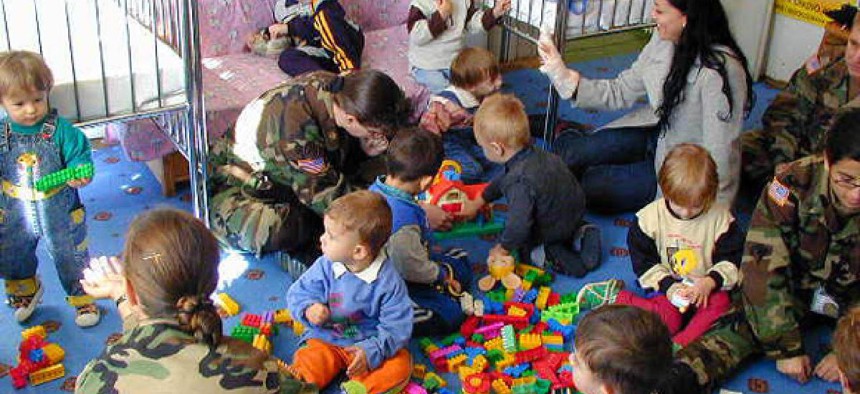
Department of Defense file photo
Defense must increase availability and awareness of child care, GAO says
Department is addressing space issues and stepping up outreach.
Military families either are missing out on Defense Department-subsidized child care or paying higher fees due to a space crunch and incomplete knowledge of all their options, according to a new Government Accountability Office report.
The shortage of on-installation child care space has resulted from increased deployment of service members to Iraq and Afghanistan, GAO said. About one-fourth of families with a parent deployed had to use off-installation care, while GAO found one installation with an average waiting list of nine months for on-site child care. The research was completed April 2011 and did not address how the wars winding down would affect the child care situation.
Even when options are adequate, Defense’s outreach efforts have fallen short in spreading the word to families about subsidized child care, both on and off military installations, the report said. GAO found that families living off of the installation, such as those of reservists, were less likely to be aware of subsidized child care options.
GAO reviewed data on child care fees since 2009. With each branch determining its own policy on subsidized child care and installation commanders usually determining the fees for on-installation child care, costs across services and installations varied.
Air Force and Navy families had higher costs overall for child care, and paid up to 16 percent more for off-installation care, GAO found, because these services had $200 subsidy caps in 2010, while the Army had variable caps and the Marine Corps had none.
With a goal of meeting 80 percent of the demand for child care by 2012, Defense has approved construction on more than 21,000 new child care spaces, and is developing a departmentwide system to create a central place at each installation for requesting child care, both on and off the installation. The system will undergo testing in spring of 2012. Additionally, the department expects to contract out the development of a marketing plan to increase awareness about the new system.
GAO did not make any recommendations in the report. Defense responded to GAO’s findings, however, noting new measures not included in the report such as the Air Force’s repeal of its 10-hour a day maximum for subsidized child care, reducing costs for families who need extended care, and the Navy’s Family Ombudsman program to reach out and educate families on their options.
“The Department of Defense is committed to helping our families access affordable, quality child care,” said Robert Gordon, deputy assistant secretary of Defense for military community and family policy. “We consider care for young children to be a workforce issue for military families with direct impact on the effectiveness and readiness of the force.”







